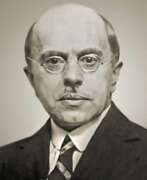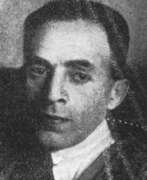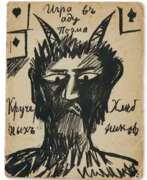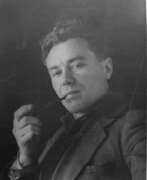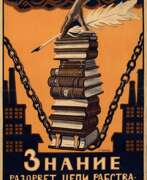Cartoonists USSR (1922-1991)
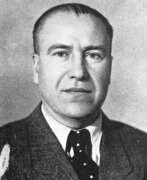

Aleksandr Aleksandrovich Deyneka (Russian: Алекса́ндр Алекса́ндрович Дейне́ка) was a Soviet Russian artist, celebrated for his significant contribution to the world of modernist figurative painting in the first half of the 20th century. Born into a Ukrainian origin, Deyneka's artistry spanned painting, graphic design, and sculpture, leaving an indelible mark on Russian modernism. His works, characterized by vivid movement and an innovative portrayal of the Soviet lifestyle, include iconic pieces such as "The Defense of Sevastopol," "Collective Farmer on a Bicycle," and "Future Pilots," which showcase the dynamism and spirit of the Soviet era. Deyneka's commitment to Social Realism—a style aimed at the accessible portrayal of everyday life—earned him both national and international acclaim. His murals and mosaics for public buildings and metro stations in Moscow, like the Mayakovskaya station, underline his influence on the Soviet visual landscape and contribute to his legacy as a pioneer of a style that bridged European innovation with Soviet themes.
Deyneka's journey began with his education at the VHUTEMAS, where he was influenced by figures such as Mayakovsky, which shaped his approach to art as a tool for societal influence and expression. His artworks, permeated with themes of labor, sports, and a forward-looking optimism, reflect the Soviet Union's utopian ambitions and the complexities of its societal structure. Notably, Deyneka's "Mother" stands out as a powerful symbol of the Soviet woman, intertwining high social awareness with the natural role of motherhood, highlighting the artist's nuanced approach to depicting Soviet life.
Throughout his career, Deyneka remained a formidable figure in art, navigating through various artistic societies and contributing to magazines and posters that defined the visual narrative of the Soviet Union. His travels to Italy, France, and the US broadened his perspective, enriching his work with international influences while retaining his distinct stylistic identity. Deyneka's decorations for the Moscow Metro not only won prestigious awards but also immortalized his vision of Soviet progress and optimism, capturing the essence of an era poised between grand aspirations and complex realities.
For art collectors and enthusiasts of Russian modernism, Deyneka's works offer a window into the vibrancy and ideological fervor of the Soviet Union, embodying the era's aesthetic and thematic aspirations. His contributions to the public and artistic spheres underscore the role of art in shaping and reflecting societal values, making his oeuvre a vital point of study for anyone interested in the intersections of art, history, and society.
To stay informed about exhibitions and auctions featuring Aleksandr Aleksandrovich Deyneka's work, sign up for updates. This subscription ensures you're always in the know about new sales and events related to this iconic artist, allowing you to deepen your appreciation and possibly enhance your collection.
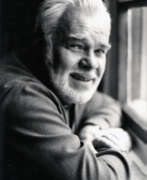

Vitaly Nikolaevich Goryaev (Russian: Виталий Николаевич Горяев) was a celebrated Soviet graphic artist, illustrator, painter, and caricaturist, born on April 14, 1910, in Tobolsk province, and passed away on April 12, 1982, in Moscow. He embarked on his artistic journey after his family moved to Chita in 1921, where he first published his drawings in the local newspaper. Goryaev's notable achievements include first-degree diplomas at the All-Union Contests "Best Books" for his illustrations to "The Adventures of Huckleberry Finn" and Gogol's "Petersburg Stories". His work was also internationally recognized, evidenced by a diploma II degree at the International Book Exhibition in Bratislava in 1967 for "Petersburg Stories", and in 1969, he was awarded the Gold Medal of the Czechoslovak Union of International Relations. Goryaev's illustrations spanned works by Russian classics like Pushkin, Gogol, and Dostoevsky, contributing significantly to the visual representation of these literary giants' works.
A laureate of the State Prize of the USSR (1967) for his contributions to illustrating Gogol's "Petersburg Stories", Goryaev was honored with the title of People's Artist of the RSFSR in 1976, and later, People's Artist of the USSR in 1981, marking his significant contributions to Soviet art. His legacy includes a profound impact on the illustration of literature, with his works being housed in prestigious collections such as the State Tretyakov Gallery, the Russian Museum, and the Pushkin Museum of Alexander Pushkin.
Goryaev's style was known for its expressive detail and ability to capture the essence of the literary works he illustrated, making his art an integral part of Soviet visual culture. His son, Sergei Vitalevich Goryaev, continues the artistic lineage as an artist, preserving the family's contribution to Russian art.
For collectors and experts in art and antiques, Goryaev's works represent a unique intersection of Soviet history, literature, and visual arts, offering a glimpse into the rich cultural tapestry of the era. His illustrations are not only important for their artistic value but also for their historical significance, embodying the spirit and challenges of Soviet society.
To stay updated on events, sales, and auctions related to Vitaly Nikolaevich Goryaev's work, sign up for updates. This subscription ensures you remain informed about opportunities to acquire pieces of this influential artist's legacy, highlighting moments when his works become available in the market.
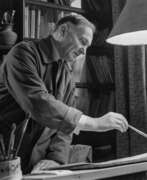

Aminadav Moiseyevich Kanevsky (Russian: Аминадав Моисеевич Каневский) was a Russian graphic artist and illustrator, celebrated for his satirical works and contributions to children's literature. Born into a large family in Elisavetgrad, Kherson province (now Kropyvnytskyi), Ukraine, in 1898, Kanevsky's early life was marked by poverty, prompting him to work from a young age in various capacities, including as a photographer's assistant and factory worker. His talent in art led him to Moscow's VKHUTEMAS, where under the guidance of Dmitry Moor, he honed his skills in cartooning and illustration, eventually becoming a prominent figure in Soviet satirical and children's publications.
Kanevsky's notable contributions include the creation of the iconic character Murzilka for children's literature, and his illustrations for "The Golden Key" by Alexei Tolstoy and "Moidodyr" by Korney Chukovsky. His work extended beyond books to satirical magazines and posters, where he depicted political themes and everyday Soviet life with humor and insight. During the Great Patriotic War, he produced anti-Nazi propaganda, showcasing his commitment to the Soviet cause through art.
Kanevsky's legacy is preserved in the State Tretyakov Gallery, the State Russian Museum, and other prestigious collections, affirming his enduring impact on Russian cultural and artistic heritage. His artworks, often executed in ink or watercolor, continue to attract collectors, with auction prices reflecting the significant interest in his oeuvre.
For enthusiasts and collectors of Aminadav Kanevsky's work, signing up for updates can provide valuable information on new sales and auction events related to his creations. This ensures that aficionados do not miss out on the opportunity to acquire pieces by this remarkable artist, whose work spans the humorous to the historically significant.
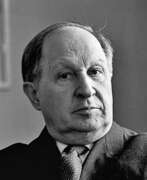

Porfiry Nikitich Krylov (Russian: Порфирий Никитич Крылов), a prominent Soviet artist, is celebrated for his extensive contributions as a painter, graphic artist, and cartoonist. Born on August 22, 1902, in Tula, Russia, Krylov emerged as a key figure in the "Kukryniksy" collective, which he formed with Mikhail Kupriyanov and Nikolai Sokolov. This group gained fame for their incisive political cartoons and evocative book illustrations that captured the spirit and challenges of their times. Beyond his collaborative work, Krylov's solo endeavors showcased his ability to delve into a range of subjects through portraits, landscapes, and still lifes, often brought to life through his plein air painting sessions. His artistry earned him several accolades, including the People's Artist of the USSR in 1958, numerous Stalin Prizes during the 1940s and 1950s, and the Lenin Prize in 1965. Krylov passed away on May 15, 1990, in Moscow, leaving behind a legacy that continues to resonate in prestigious collections such as the State Tretyakov Gallery and the State Russian Museum.
For collectors and experts in art and antiques, delving into Krylov's works presents a unique opportunity to explore the depths of Soviet artistic expression. His diverse body of work offers insights into the cultural and political dynamics of his time, making his pieces highly sought after in the art collection circuit.
To stay abreast of the latest sales and auction events featuring Porfiry Nikitich Krylov's works, enthusiasts and collectors are encouraged to sign up for updates. This ensures access to the opportunity to acquire pieces from the impressive oeuvre of this celebrated Soviet artist, enriching collections with works of significant historical and artistic value.
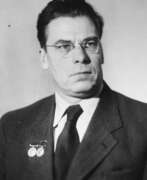

Mikhail Vasilyevich Kupriyanov (Russian: Михаил Васильевич Куприянов) was a Russian artist whose career spanned various facets of painting and graphic design, earning him a celebrated spot in the art world. Born in the early 20th century, his educational path led him from Tashkent Central Art Studios to VKhUTEMAS/VKhUTEIN in Moscow, where he honed his skills in graphic arts. Kupriyanov's artistry was not confined to a single genre; he adeptly moved between creating industrial landscapes, engaging in wartime propaganda work, and capturing serene European and Russian sceneries.
His early work, particularly in the 1920s and 1930s, showcases a profound affinity for the railway and its surrounding landscapes, depicted with remarkable precision and artistry in watercolor. These pieces uniquely blend technology with nature, showcasing dynamic compositions and an atmospheric quality that resonates with the viewer.
During World War II, Kupriyanov, along with his colleagues, ventured into the realm of anti-war propaganda, producing posters, caricatures, and leaflets that were instrumental in the Soviet Union's informational warfare. This period of his work highlights his ability to channel his artistic talent into powerful social commentary.
The post-war era saw a shift in Kupriyanov's focus to landscapes, where he captured the essence of Moscow and several European locales with a subtle and harmonious palette. These works, reminiscent of the French Barbizon school, are celebrated for their simplicity, emotional depth, and pictorial integrity, setting Kupriyanov apart as a master of landscape painting.
Kupriyanov's legacy is preserved through his numerous awards and the recognition he received, including being named a People's Artist of the USSR and a Hero of Socialist Labor. His works are featured in some of the most prestigious museums and private collections worldwide, demonstrating his enduring influence on the art world.
For collectors and art enthusiasts, Kupriyanov's oeuvre offers a compelling glimpse into the rich tapestry of Russian artistic heritage and its historical context. Engaging with his works offers not only aesthetic pleasure but also a deeper appreciation for the role of art in societal discourse. To remain informed about opportunities to acquire pieces by Kupriyanov or learn more about exhibitions featuring his work, signing up for updates is recommended. This ensures access to valuable information about sales and auction events related to this distinguished artist, enriching collections with pieces of significant historical and artistic merit.
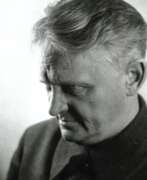

Dmitry Moor, born Dmitry Stakhievich Orlov (Russian: Дмитрий Стахиевич Орлов) was a Russian and Soviet artist of the 19th and 20th centuries. He is known as an illustrator and poster artist whose biography is closely connected with the Bolshevik movement. Moor is considered to be the founder of the Soviet agitational and political poster.
Dmitry Moor began his career as an illustrator-caricaturist, and before the revolution of 1917 he collaborated with Russian periodicals. Moor met the revolution as a graphic artist. He chose the path of an agitator artist, undertaking as one of the first to design propaganda trains. His posters became widely known. His favorite graphic device was a black-and-white ink drawing, emotionally intensified by sharp, usually red accents. His works were imbued with revolutionary romanticism and denounced the enemies of the Soviet state and the remnants of the capitalist system. During the war with Nazi Germany, Moor created posters denouncing the atrocities of the Nazis.
Moor also created posters for cinematographic films and combined creative activities with teaching, working, in particular, at the Moscow Surikov Art Institute.
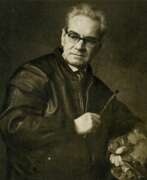

Boris Ivanovich Prorokov (Russian: Борис Иванович Пророков) was a significant figure in the Soviet art scene, known for his incisive political cartoons and poignant graphic art. Born in 1911 in the Soviet Union, Prorokov's early career was marked by a strong opposition to fascism, which heavily influenced his artworks. His artistic journey began with collaborations on magazines such as Smena and Krokodil, and by 1939, he had already made his mark with the textbook poster-drawing "Fascism is the enemy of culture".
During the Great Patriotic War, Prorokov served as an artist for the Main Directorate of Political Propaganda of the Navy, contributing to front-line printing and leaflet drops over enemy territory. His experiences across various battlefronts, including the heroic defense of the Hanko Peninsula and the battles for Novorossiysk, profoundly influenced his later works. Prorokov's service earned him numerous state awards, including the Orders of the Red Star and the Red Banner of Labor.
Prorokov's post-war period was no less illustrious. He created powerful easel graphics series that gained international acclaim, such as "Americans in Europe," "This must not happen again," and "Son." These works, often characterized by their laconic style and contrasting drawing, made a significant impact on Soviet and international art. His ability to convey complex political and social messages through art earned him the Lenin Prize in 1961.
Prorokov's legacy is preserved not only through his artworks, which are held in prestigious institutions like the State Tretyakov Gallery and the Russian Museum but also through the house-museum in Ivanovo, dedicated to his life and work. His influence extends beyond his immediate sphere, contributing significantly to the Soviet propaganda effort and the broader discourse on art and politics.
For collectors and experts in art and antiques, Prorokov's work offers a unique insight into the Soviet artistic response to pivotal historical events. His dedication to political themes, combined with his artistic talent, makes his work a compelling study for anyone interested in the intersection of art and history.
To stay updated on sales and auction events related to Boris Ivanovich Prorokov's work, sign up for our newsletter. This subscription will ensure you're the first to know about new discoveries and opportunities to add to your collection of Soviet art.
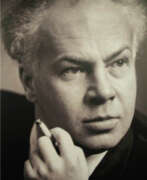

Vladimir Alexandrovich Serov (Russian: Влади́мир Алекса́ндрович Серо́в) was a Russian painter, illustrator, and teacher renowned for his commitment to the socialist realism movement. Born into a rural teacher's family on July 21, 1910, Serov's artistic journey began at the Leningrad Institute of Proletarian Fine Arts, from which he graduated in 1931. Under the tutelage of Isaak Brodsky, Serov honed his craft before embarking on a career that would see him deeply engaged in the artistic and political life of the Soviet Union. His works, primarily focused on historical-revolutionary themes, portraits, and landscapes, embody the spirit and ideological drive of the era, reflecting the official Soviet historiography of the 1940s and 1960s.
During World War II, Serov's leadership roles within the Leningrad Union of Artists and his membership in the Communist Party since 1942 underscored his influence in the Soviet art scene and his active participation in the political sphere. As president of the Soviet Academy of Arts from 1962 until his death in 1968, Serov played a pivotal role in shaping Soviet art and culture. His burial at the Novodevichy Cemetery in Moscow marks the resting place of a figure who not only witnessed but also contributed to the significant historical events of his time through his art.
For collectors and experts in art and antiques, Serov's body of work offers a fascinating glimpse into the soul of Soviet realism, characterized by ideological determination, clear composition, and precise drawing. His pieces, such as "V.I. Lenin proclaims Soviet power," remain pivotal in understanding the artistic and cultural narratives of the Soviet era.
To stay updated on sales and auction events related to Vladimir Alexandrovich Serov's art, sign up for updates. This subscription is your gateway to exploring the profound impact and legacy of Serov's contributions to Soviet art and history.
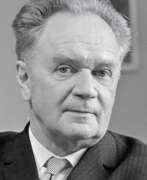

Nikolai Alexandrovich Sokolov (Russian: Николай Александрович Соколов) was a prominent Soviet graphic artist and painter, renowned for his significant contributions to the USSR's art scene. Born in 1903 near Moscow, he became a key member of the KuKriNiksy collective, alongside Mikhail Kupriyanov and Porfiry Krylov, where they produced influential anti-Nazi propaganda and satirical artworks during World War II. These pieces are celebrated for their critical role in wartime artistic expression.
Educated at the esteemed VKHUTEMAS, Sokolov was under the mentorship of leading artists, graduating in 1929. His career was not limited to his solo work; he made substantial contributions to newspapers and magazines through political posters, book illustrations, and caricatures. Sokolov was honored with several prestigious awards, including being named People's Artist of the USSR, receiving the Lenin Prize, and being designated Hero of Socialist Labor, highlighting his contributions to Soviet arts.
Sokolov's diverse body of work, including portraits, landscapes, and still lifes, is featured in significant collections like the State Tretyakov Gallery and the State Russian Museum. His international recognition is underscored by his presence in global institutions such as the Museum of Modern Art (MoMA), demonstrating his far-reaching influence.
For art collectors and experts, Sokolov’s legacy provides a fascinating insight into Soviet artistic practices, blending historical significance with exceptional craftsmanship. His continued relevance in art and auction events offers a direct link to exploring the Soviet art landscape through the work of one of its most impactful figures.
Stay informed about new sales and exhibitions featuring Sokolov’s art by signing up for updates. This subscription is an opportunity to connect with the rich legacy of a Soviet art luminary, ensuring you’re at the forefront of discovering and appreciating Nikolai Alexandrovich Sokolov's enduring artistic contributions.
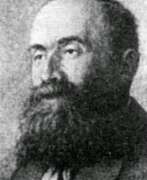

Sergey Ivanovich Svetoslavsky (Russian: Сергей Иванович Светославский) was a Russian Ukrainian and Soviet artist of the late 19th - first third of the 20th centuries. He is known as a painter-landscaper and graphic-caricaturist.
Sergey Svetoslavsky in his works created a lyric-epic image of Ukraine. Most of all he was attracted by the urban landscapes of Kiev and rural landscapes around the city. One of his favorite subjects were views of the Dnieper. The master was a member of the Association of Traveling Art Exhibitions and his city landscapes were done mainly in gray-brown tones, which was typical for the Itinerants.
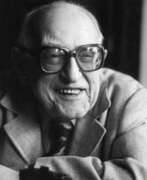

Boris Yefimovich Yefimov (Russian: Бори́с Ефи́мович Ефи́мов), a Soviet-Russian political cartoonist, left an indelible mark on the art of caricature with a career that spanned over nine decades. Born in Kiev, Yefimov grew up in a Jewish family, eventually changing his surname during the turbulent times of the Russian Civil War to conceal his Jewish origins. His early life was shaped by significant historical upheavals, including the First World War and the Russian Revolution, events that deeply influenced his work and perspectives.
Yefimov gained fame for his biting political cartoons that critiqued Adolf Hitler and the Nazis, contributing significantly to Soviet propaganda efforts during the Second World War. His caricatures were not only a source of morale for the Soviet people but were also recognized by Stalin, who personally spared Yefimov from purges that affected many of his contemporaries, including Yefimov's own brother. Despite the controversial aspects of his relationship with the Soviet regime, Yefimov's artistry and wit in critiquing political figures and events earned him widespread acclaim.
His contributions were recognized with numerous awards, including the Stalin Prizes and the title of People's Painter of the USSR. Yefimov's legacy is preserved in his extensive body of work, which includes over 70,000 works, showcasing his unparalleled skill in using humor and satire to comment on the political landscape of his time.
For collectors and experts in art and antiques, Boris Yefimov's works offer a unique glimpse into the historical and political zeitgeist of the 20th century. To stay updated on new product sales and auction events related to Boris Yefimov, sign up for updates. This subscription will ensure you're informed about the latest opportunities to own a piece of this remarkable artist's legacy.
